Helsinki Central Library Entry by Kubota & Bachmann Architects+Martinez
By Bustler Editors|
Wednesday, Nov 21, 2012
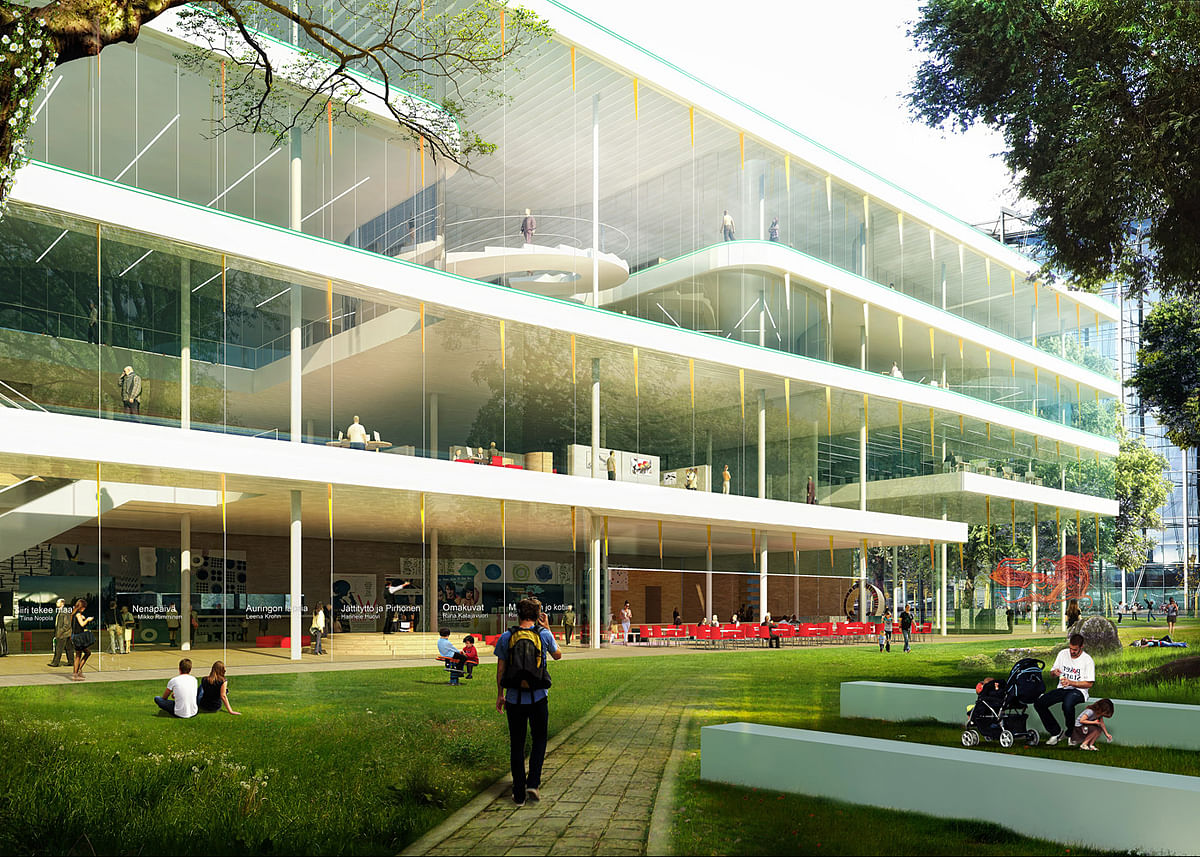
Related
Earlier today, we had published the six proposals to reach stage 2 of the international competition for the design of the Helsinki Central Library. Here's now also another stage 1 entry we have received from Swiss/Japanese practice Kubota & Bachmann Architects in collaboration with Francisco Martinez.
Project Description from Kubota & Bachmann Architects+Martinez:
Shared Dreams is a proposal for the new Helsinki Library, sited at a strategic point within the city, the cultural cluster in the Töölönlahti area, with the Helsinki Music Centre, the Aalto congress centre, and the Kiasma contemporary art museum. Office buildings and housing also contribute to urban life around the Makasiinipuisto Park. The new library is committed to strengthening this cluster.
This project conforms to the proposed massing and urban regulations, while endeavoring to give a coherent response to the program and the environment. The variety of the urban conditions will be, from the very beginning, reflected in the concept of the building and the organization of spaces.
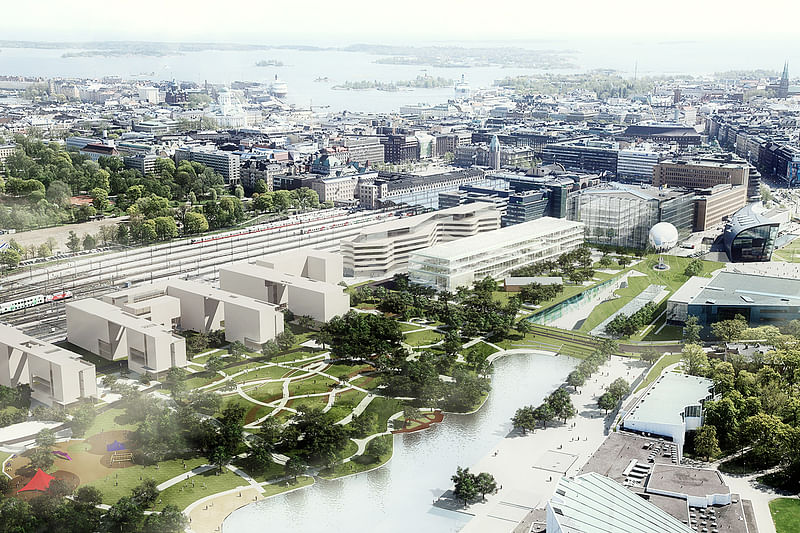
The library is the point of departure for the mixed-used buildings to be developed in future to the north. To the east, there is a new office building between the railways and the library site, framing the new street, which serves the new development area. To the south, the building will articulate the access from the train station and bus station. The strong determining axis of Baana, the pedestrian and bicycle path whose line runs through the park and is determined by the railway warehouse, intersects with the west façade of the library and points to its entrance. The cross point between Baana and Mannerheimintie is the main gate to the park. From there we see the entrance to the library.
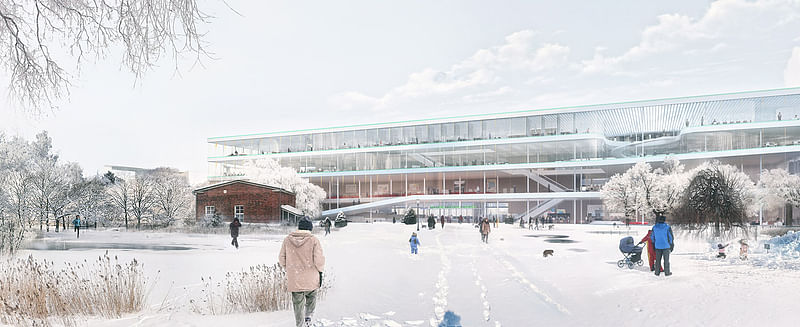
Planning gives priority to pedestrian access. The traffic-free space of the park is an asset to the city, which draws many cultural attraction spots around it, and should be available also to the library. Urban continuity is the strategy. At ground floor level the library will be connected to the public space, opening it to all the activities and events taking place, through a continuous arrangement of sloped floors, open, transparent and flexible. A sequence of functions such as exhibitions, a café, a cinema, a sauna, meeting spaces, an event hall and a restaurant continue the urban public space onwards from the lobby area. The library’s urban program will thus activate the public space and contribute to the cultural life of the area.
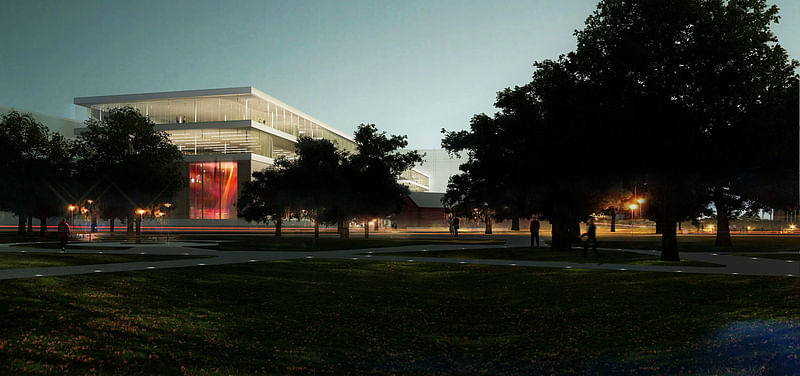
From here a transition is made to the library spaces for collection and consultation. These occupy the two upper floors on the second and third levels, and take advantage of the light, the view, and the calm. These spaces are more intimate or more precisely programmed, according to requirement. The consultation spaces in particular will enjoy the views and the natural daylight of the upper floors. They will be acoustically protected from the noisy urban/public spaces to provide excellent work conditions, but will be easily accessible from the entrance by means of escalators, as well as having visual connections to the public spaces.
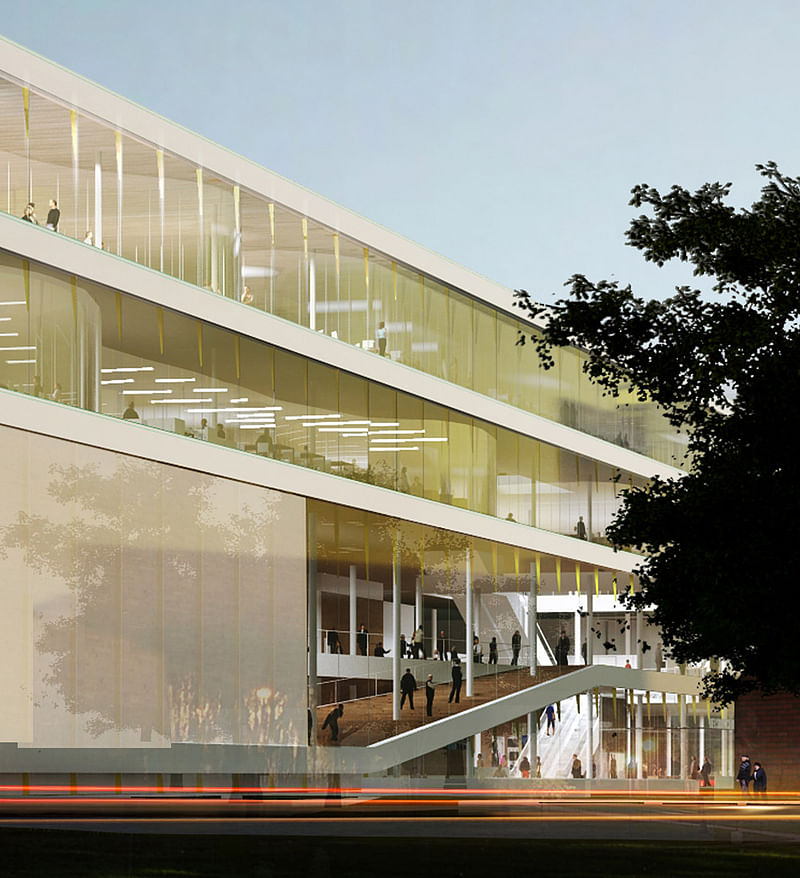
These two worlds, with different conditions, share a large central void where the escalators connect all the levels. This atrium provides natural daylight and a full clear view of the entire spaces of the building, permitting multiple visual connections between different levels. Lounge areas, working points, and some general collection areas, distributed at all levels from the ground upwards around the central void, will introduce the ambience of the library already from the entrance, guiding the visitor to the collection areas in the upper levels.
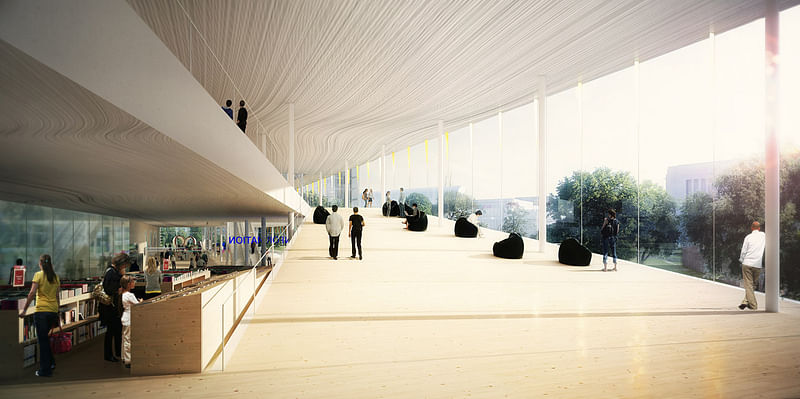
The New Library is flexible, transparent and readable. It offers a free cultural forum to the city, fully accessible. Shared dreams is intended to be easily understood and appropriated by Helsinki inhabitants and visitors. A double-glazed curtain wall envelope shapes the building, in a straight and simple geometry. This efficient outer skin materializes the thermal line of the building. Double-glazing units run between the floor slabs, which are expressed on the façade to reinforce movements and circulation within the building. There is an additional interior glass skin to the two top stories, the levels of collections and consultation spaces. This second skin, more organic in its geometry, brings additional thermal performance to the long-stay spaces, as well as a second layer to the building, revealed behind the exterior skin, through the reflections and transparencies, which will vary in appearance and intensity depending on the angle of incident sunlight. The subtlety and complexity of the building and its interior skin emerge behind the glass envelope of the outer skin. A second layer of detail enhances the perception of the building, behind the apparent simplicity of the glass box.
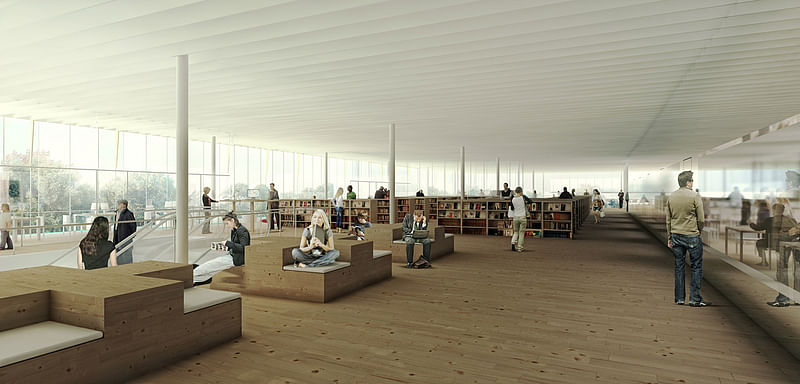
In the two upper stories of the library, the volume between the strictly flat outer skin, straight and simple, and the free inner skin, organic in line, creates calm spaces for reading or working, quiet and acoustically isolated. Inhabited spaces in the double skin enjoy some privacy from the general space, and a privileged location at the same time, next to the façade in direct contact to the views of the park, with exceptional daylight conditions to work. These spaces can also be isolated visually with curtains or movable partitions, and provide the blackout for presentations or video projections. These buffer areas also enjoy good standards of thermal comfort, in winter as in summer, creating a new spatial situation, with interesting working conditions: An inhabited double skin, inspired by great Finnish designers like Alvar Aalto and Eero Aarnio.
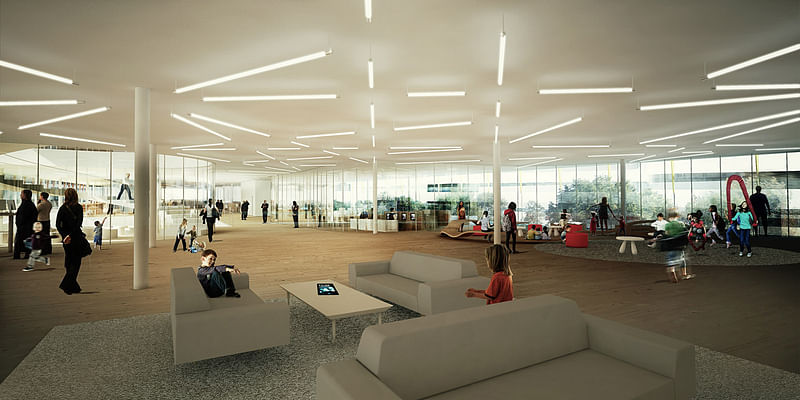
We advance towards the hybrid library, where digital documents are taking the place of physical books. The physical support has to coexist with many new media. The library as a building is necessary, gathering all these media and offering them to the city in the most attractive conditions. The new library is flexible, adaptable to future unknown evolutions and new uses. We share the dream of this new library enhancing connections, creating links and generating human knowledge.
shared dreams’ of literature – a virtual, open cosmos, accessible to anyone, without a password
virtual = evolution , hybrid library and new technologies
open cosmos = open space et flexibility
accessible to anyone = public space
without a password = easy access and readable
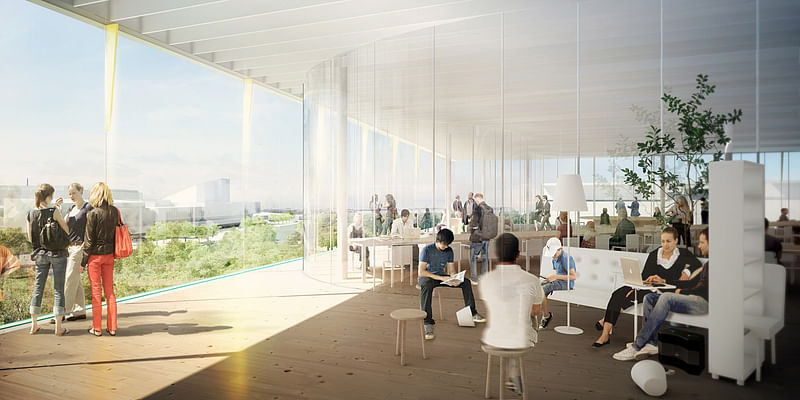
Project Details:
Project Name: Helsinki Central Library
Location: Helsinki, Finland
Client: Helsinki City
Type of Competition: Open International Competition
Program: Library, childrens’ world, Exhibition, Cinema, Public service space and office
Site Area: Competition Study Area: 4,800 m²
Usable Floor Area: 10,526 m²
Gross Floor Area: 19,560m²
Status: Stage 1 Competition Entry
Competition Team:
Designer: Toshihiro Kubota, Francisco Martinez, Yves Bachmann
Energy-technology expert: Elioth (egis group) / Sebastien Duprat, Aymeric Anqutin
Perspectives: Jigen
Architect: Thoma Amarty, Pierre Voirin, Charlotte Thietart
Find also drawings and diagrams of the scheme in the image gallery below.
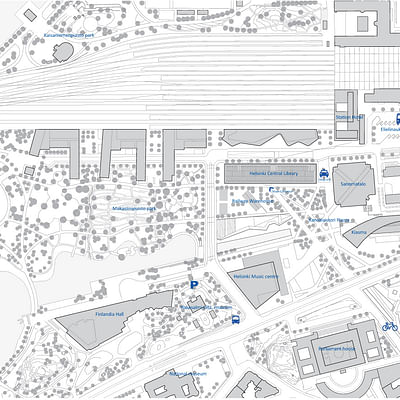
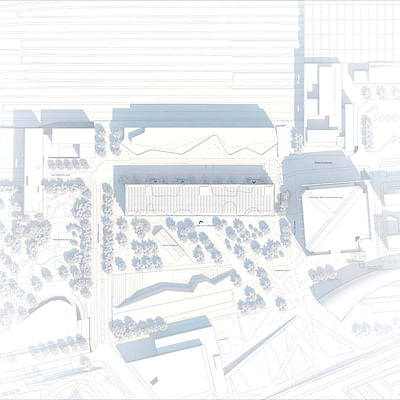
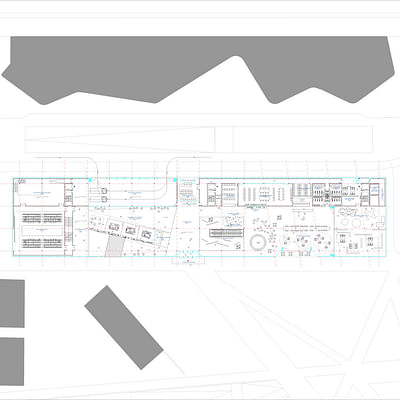
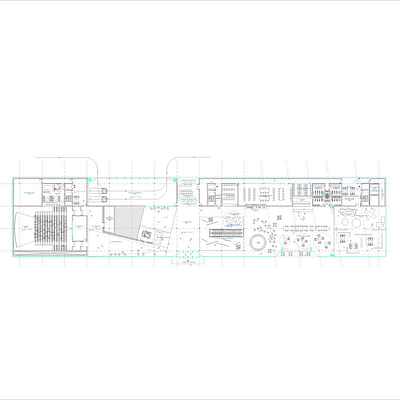
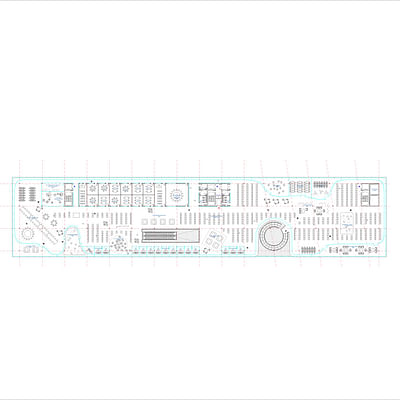
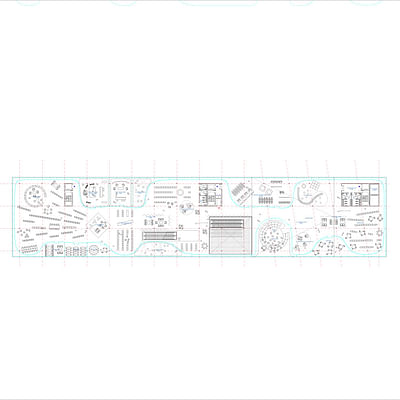
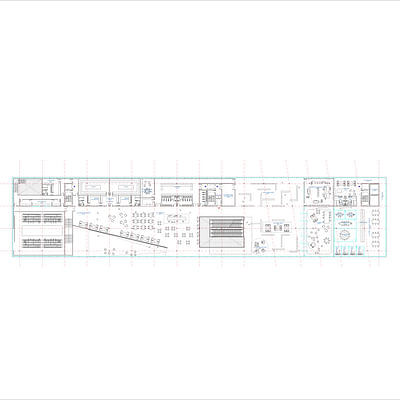
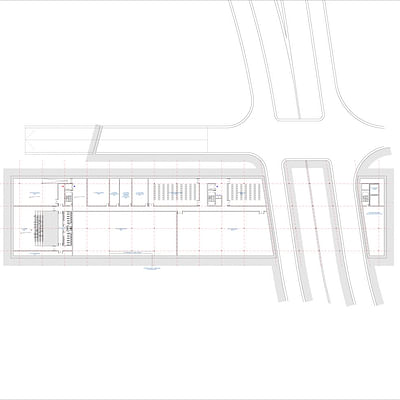
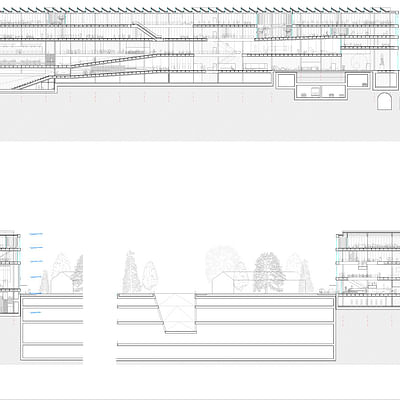
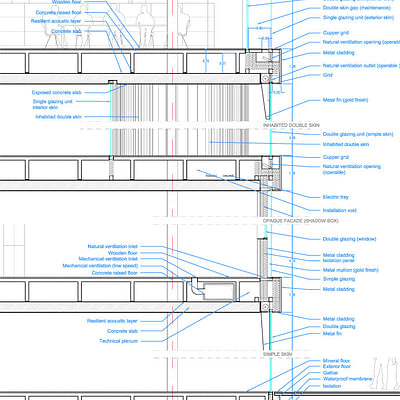
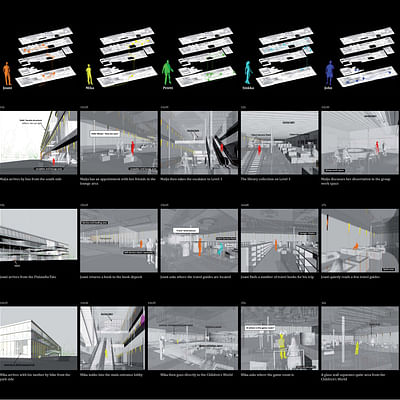
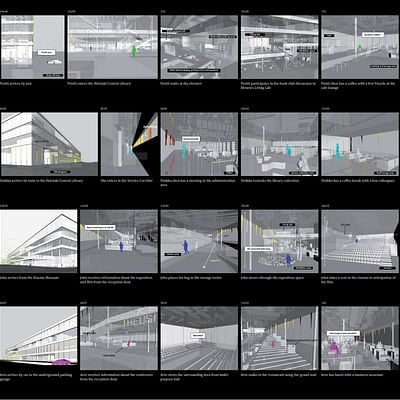
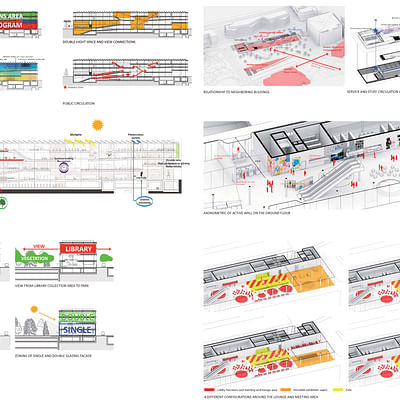
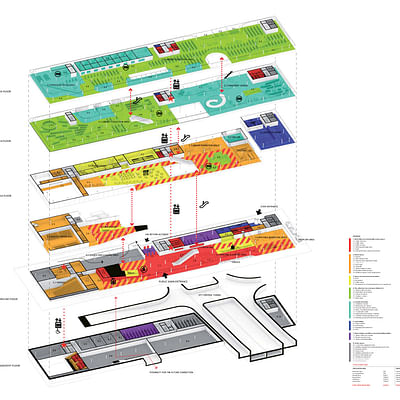

Share
0 Comments
Comment as :